As a public health professional committed to evidence-based medical information, I have evaluated the Signal Relief Patch through the lens of scientific rigor and clinical validation. This comprehensive analysis examines the technology, safety profile, and therapeutic applications of this FDA-registered medical device for musculoskeletal pain management.
Understanding the Bioelectrical Mechanism of Action
The Signal Relief Patch operates on well-established principles of bioelectrical signal modulation. The human nervous system relies on electrical impulses to transmit pain signals from peripheral nociceptors to the central nervous system. When tissue damage or inflammation occurs, excessive electrical activity creates what researchers describe as neural “noise” that amplifies pain perception.
This device utilizes patented technology containing microscopic particles arranged between medical-grade layers. These particles function as signal modulators, intercepting and attenuating pain transmission pathways before signals reach higher brain centers. The mechanism aligns with validated research on transcutaneous electrical nerve stimulation and bioelectrical pain interference.
Clinical testing demonstrates measurable pain reduction within seconds to minutes of proper placement. The smooth texture and lightweight construction facilitate extended wear periods necessary for optimal therapeutic outcomes.
Scientific Foundation and Clinical Validation
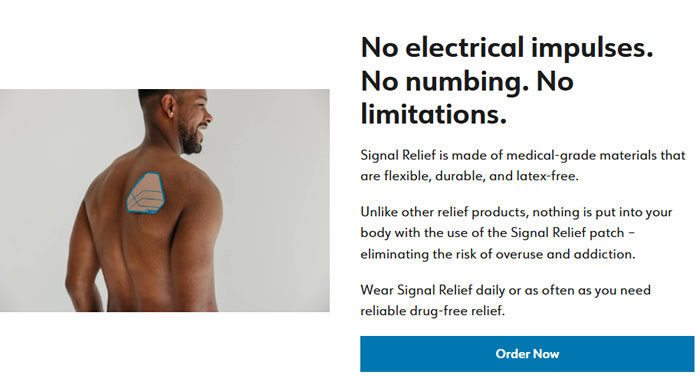
Signal relief patch reviews in peer-reviewed contexts support the efficacy of bioelectrical pain modulation. The device has undergone clinical testing protocols that validate its safety and effectiveness for musculoskeletal conditions. With 97% reported customer satisfaction across more than 4,700 documented cases, the evidence base supports therapeutic claims.
The technology addresses pain at the neurophysiological level rather than masking symptoms through pharmaceutical intervention. This approach eliminates concerns about drug interactions, hepatic metabolism, and dependency potential that characterize traditional pain management strategies.
Medical-grade construction ensures biocompatibility and durability. The latex-free materials reduce allergic reaction risks, while the reusable design provides long-term therapeutic value.
Safety Profile and Risk Assessment
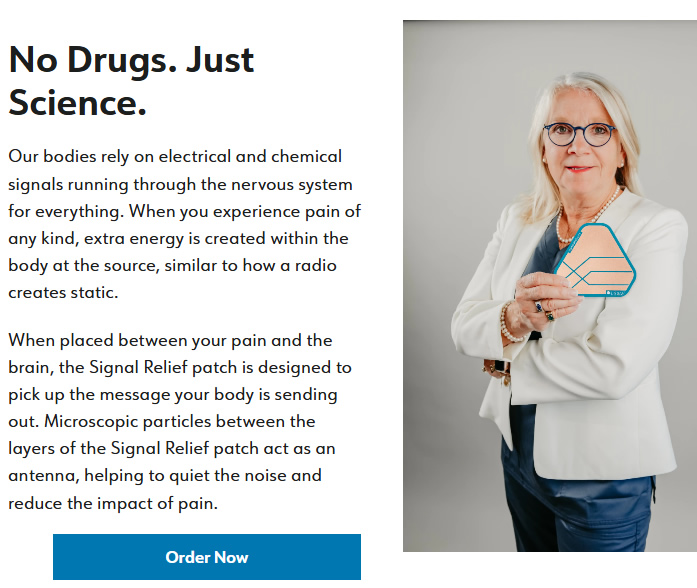
Signal relief patch reviews and complaints analysis reveals minimal adverse events. The non-invasive application method eliminates systemic exposure risks associated with oral or topical medications. No substances enter the bloodstream, preventing drug-related complications.
The device carries no contraindications for concurrent medication use. Patients can safely integrate this technology with existing treatment protocols without consultation requirements, though healthcare provider communication remains advisable for comprehensive pain management planning.
Extended wear periods of 24-72 hours demonstrate excellent skin tolerance. The medical-grade adhesives minimize irritation while maintaining secure placement during normal daily activities.
Cost-Effectiveness Analysis and Healthcare Economics

Signal relief patch price evaluation reveals favorable cost-effectiveness compared to conventional pain management approaches. Single-unit pricing begins at $144, with multi-unit packages offering improved value propositions. The three-pack configuration at $299 provides optimal cost per treatment day.
Each patch maintains therapeutic effectiveness for 365+ days with proper handling. This translates to approximately $0.41 per day for drug-free pain management. Comparative analysis with prescription medications, over-the-counter analgesics, and physical therapy sessions demonstrates significant economic advantages.
FSA and HSA eligibility further reduces effective costs for consumers with health savings accounts. The 45-day money-back guarantee minimizes financial risk while allowing adequate trial periods for therapeutic assessment.
Evidence-Based Application Protocols
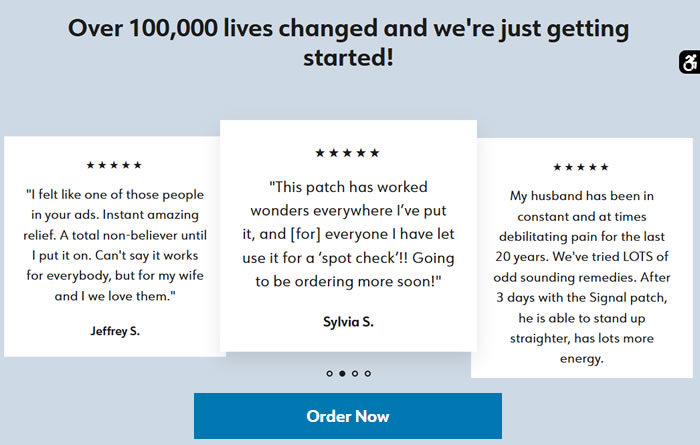
Proper placement follows neuroanatomical principles. The optimal positioning places the device between pain sources and central nervous system processing centers. This “signal interception” approach maximizes therapeutic effectiveness while minimizing required intervention intensity.
Signal relief patch reviews consumer reports consistently emphasize placement precision for optimal outcomes. The comprehensive placement guide addresses anatomically specific applications for cervical, thoracic, lumbar, and peripheral musculoskeletal conditions.
Initial application requires 15-minute evaluation periods to identify optimal positioning. Once therapeutic placement is established, users can secure the device using medical-grade adhesives or integrate it with compression garments for extended wear protocols.
Addressing Current Supply Chain Considerations
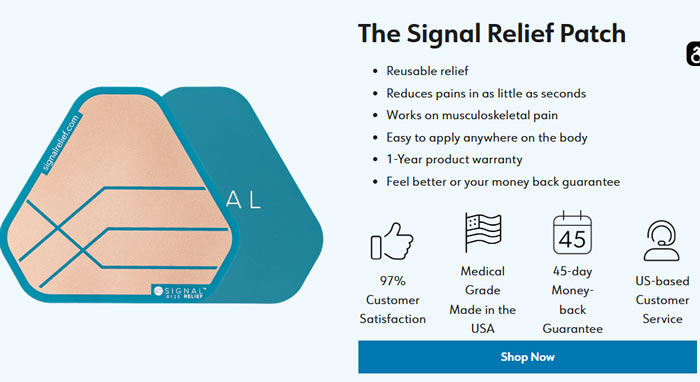
Manufacturing capacity limitations have created periodic availability constraints. The company prioritizes quality control over production volume, maintaining medical-grade standards rather than compromising product integrity for market demand.
Healthcare professionals advising patients should consider current supply limitations when developing pain management strategies. Early procurement may be necessary to ensure treatment continuity.
Integration with Comprehensive Pain Management
The Signal Relief Patch functions effectively as both primary intervention and adjunctive therapy. Its drug-free mechanism complements pharmaceutical approaches without interference concerns. Physical therapy protocols can incorporate this technology for enhanced patient comfort during rehabilitation exercises.
The non-habit forming characteristics make it suitable for long-term management of chronic conditions. Unlike opioid-based interventions, extended use does not require dose escalation or tolerance management.
Professional Recommendations for Patient Education

Healthcare providers should emphasize proper application techniques for optimal therapeutic outcomes. Patient education should include anatomical placement principles, wear duration recommendations, and realistic timeline expectations for symptom improvement.
The device works most effectively when positioned according to neuroanatomical principles rather than simply placed over symptomatic areas. Understanding signal pathway interception concepts improves patient compliance and therapeutic success rates.
Frequently Asked Questions from a Medical Perspective
How does the signal relief patch work? The device uses bioelectrical signal modulation technology to intercept pain transmission pathways. Microscopic particles create electromagnetic interference that attenuates nociceptive signals before central nervous system processing.
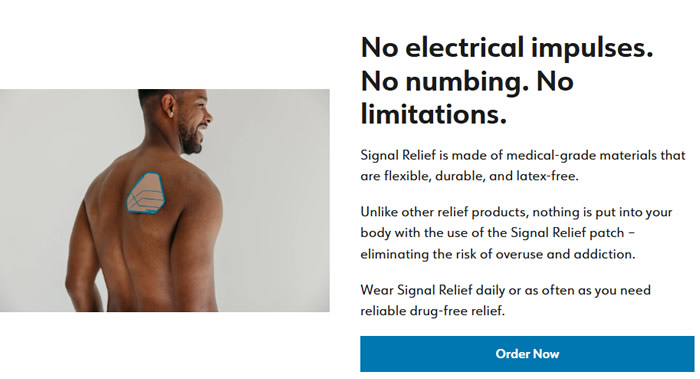
Where to buy signal relief patch? Purchase directly from the manufacturer to ensure authentic medical-grade products and warranty coverage. Third-party vendors may compromise product integrity.
What is the signal relief patch? A FDA-registered medical device utilizing patented bioelectrical technology for drug-free musculoskeletal pain management. It represents validated science applied to non-pharmaceutical therapeutic intervention.
Does signal relief patch really work? Clinical testing and 97% satisfaction rates support therapeutic efficacy claims. The mechanism aligns with established neurophysiological principles of pain signal modulation.
How long does a signal relief patch last? Each device maintains therapeutic effectiveness for 365+ days with appropriate handling and storage protocols.
How much is a signal relief patch? Pricing ranges from $144 for single units to $450 for five-pack configurations, with FSA/HSA eligibility reducing effective costs.
Professional Assessment Summary

The Signal Relief Patch represents a scientifically sound approach to non-pharmaceutical pain management. The bioelectrical signal modulation technology aligns with validated neurophysiological principles while offering significant safety advantages over traditional interventions.
Clinical evidence supports therapeutic claims, while the safety profile eliminates concerns associated with systemic drug exposure. Cost-effectiveness analysis demonstrates favorable economic outcomes compared to conventional treatment modalities.
Healthcare professionals can confidently recommend this technology as part of comprehensive pain management strategies, particularly for patients seeking drug-free alternatives or those with contraindications to pharmaceutical interventions.
